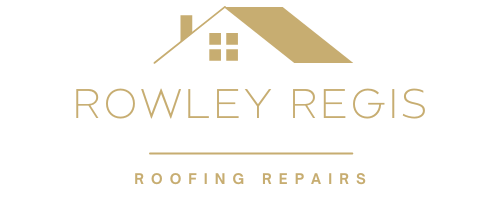Lead flashing is a crucial part of any roofing system, acting as a protective barrier that prevents water from entering vulnerable junctions such as chimneys, roof valleys, and wall abutments. When flashing becomes damaged, the roof loses one of its most important layers of defence against moisture. At Rowley Regis Roofing Repairs, we regularly assist homeowners across Rowley Regis, Staffordshire with issues involving cracked, lifted, or deteriorated lead flashing, helping restore the integrity of their roofing systems.
Understanding what causes lead flashing to fail is key to identifying problems early and protecting your home from water ingress.
Natural Thermal Movement of the Roof
Lead is a highly durable material, but it expands and contracts with changes in temperature. Over time, this natural movement can place stress on the flashing. If the flashing has been installed without room to accommodate this movement, the pressure can cause:
- Cracking
- Warping
- Lifting from the masonry
- Failure of fixings or joints
In areas like Rowley Regis, Staffordshire where seasonal changes are frequent, these temperature shifts can gradually weaken flashing unless it has been fitted correctly. Rowley Regis Roofing Repairs often find that improper allowance for expansion is one of the leading causes of flashing failure.
Poor or Incorrect Installation
Although lead flashing is long-lasting when fitted properly, mistakes during installation can significantly reduce its lifespan. Problems often arise when:
- The flashing is too thin or the wrong grade of lead is used
- Short lengths are fitted without adequate overlaps
- Fixings are placed incorrectly or too tightly
- Mortar joints are not sealed securely
These installation errors can cause premature cracking, lifting, or gaps that allow water to enter the property. Proper installation is essential for a long-lasting roof, which is why homeowners trust Rowley Regis Roofing Repairs for reliable workmanship.
Weathering and Long-Term Exposure
Lead flashing is exposed to constant weathering. Over many years, rain, frost, and strong winds gradually wear down the material. This long-term exposure may lead to:
- Surface fatigue
- Minor fractures forming into larger cracks
- Erosion of surrounding mortar
- Weak points that allow water to seep beneath the flashing
Roofs in Rowley Regis, Staffordshire face varied weather conditions throughout the year, making weather-related deterioration one of the most common causes of flashing damage.
Structural Movement in the Building
Buildings naturally move and settle over time due to ground shifts, changes in moisture levels, and the weight of the property. Even small movements can impact the roof structure. If the brickwork or roof timbers shift, the flashing may loosen, crack, or detach from its fixing points.
This type of movement is especially common around chimneys and wall junctions, where flashing is most likely to experience stress. When homeowners contact Rowley Regis Roofing Repairs for flashing issues, structural movement is frequently a contributing factor.
Damage Caused by Nearby Roof Components
Lead flashing is often located close to other roof features such as tiles, ridge sections, and chimney brickwork. If any of these areas become damaged, loose, or worn, they can place stress on the flashing itself. For example:
- Loose tiles can scrape or lift the flashing
- Cracked mortar can allow water into the joint
- Collapsing chimney bricks can shift the flashing out of place
Ensuring surrounding components remain in good condition helps protect the flashing from unnecessary strain.
Impact Damage and External Interference
Although lead is tough, it can still be damaged by physical impact. Common causes include:
- Falling tree branches
- Wildlife disturbance
- Foot traffic during roof access
- Strong winds lifting surrounding materials
These unexpected events can quickly compromise the flashing, creating gaps where water can enter. Regular roof inspections allow issues like this to be spotted quickly.
Corrosion and Surface Breakdown
While lead is naturally resistant to corrosion, certain environmental conditions or pollutants can cause surface degradation. Over time, this may lead to cracks, thinning, or discolouration that indicate weakening material.
Although corrosion is less common than mechanical damage, it can still affect older roofs in Rowley Regis and should be addressed promptly.
How Rowley Regis Roofing Repairs Helps Protect Your Roof
When lead flashing cracks or lifts, swift action is needed to prevent water damage inside the home. Rowley Regis Roofing Repairs provides expert assessments and professional repair solutions to restore flashing performance and reinforce vulnerable areas of the roof. Our team carefully identifies the cause of the issue, ensuring long-lasting repairs that preserve the structural health of your property.
Conclusion
Lead flashing plays a vital role in keeping your home watertight, but a combination of weather exposure, building movement, installation errors, and impact damage can cause it to crack or lift over time. Understanding these causes helps homeowners recognise early warning signs and take action before moisture creates further problems. With support from Rowley Regis Roofing Repairs, properties across Rowley Regis, Staffordshire benefit from reliable repairs that restore protection and maintain the overall performance of the roof.
Call us on: 0121 312 1589
Click here to find out more about Rowley Regis Roofing Repairs
Click here to complete our contact form and see how we can help with your roofing needs.

